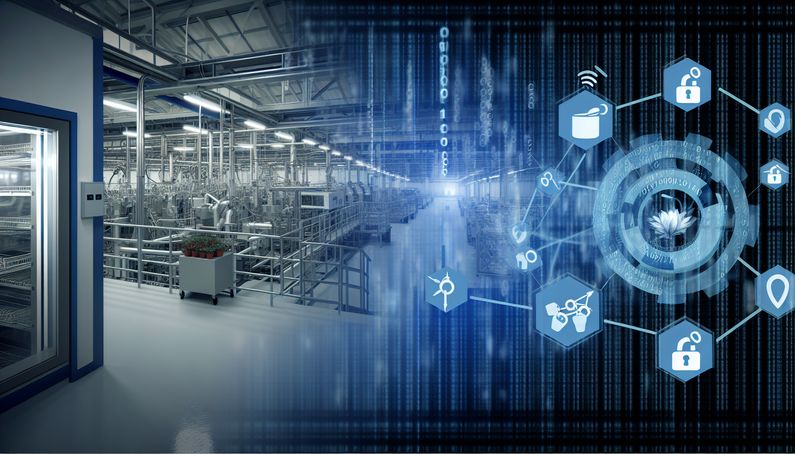
Arla Foods Cyberattack: Lessons for the Food Industry
A cyberattack on Arla Foods’ factory in Germany has highlighted the pressing cybersecurity challenges facing the food industry today. This incident, marked by unusual activity on the company’s IT network, caused major disruptions in production and operations, underscoring the urgent need for strong cybersecurity protocols (Just Food). As food production increasingly depends on interconnected systems and automation, the risk of cyber threats grows, threatening not just individual companies but entire supply chains. The financial stakes are high, with the food and agriculture sector experiencing numerous ransomware attacks, as noted by the Food and Agriculture-Information Sharing and Analysis Center. This situation calls for a comprehensive cybersecurity strategy, including regular risk assessments and expert collaboration to protect critical infrastructure.
Arla Foods Cyberattack: Disruption and Implications
Impact on Production and Operations
The cyberattack on Arla Foods’ factory in Germany significantly disrupted production and operations. The incident involved unusual activity on the company’s IT network, prompting security measures that affected production capabilities (Just Food). This disruption highlights the vulnerability of food production facilities to cyber threats, especially as these facilities increasingly rely on interconnected systems and automated processes. The incident underscores the need for robust cybersecurity measures to protect against operational downtime, which can have cascading effects on supply chains and product availability.
Financial Implications
The financial impact of cyberattacks on companies like Arla Foods can be substantial. Beyond the immediate costs associated with halting production and implementing security measures, there are potential long-term financial repercussions. These include loss of revenue due to production delays, costs associated with system recovery and strengthening cybersecurity defenses, and potential legal liabilities if customer data is compromised. The Food and Agriculture-Information Sharing and Analysis Center reported that the food and agriculture industry faced 167 ransomware attacks in 2023, highlighting the financial stakes involved. As the food industry is valued at over $1 trillion in the U.S. alone, the financial implications of cyberattacks are a significant concern for stakeholders.
Supply Chain Vulnerabilities
The interconnected nature of the food industry’s supply chain makes it particularly susceptible to cyberattacks. A vulnerability in one part of the supply chain can expose the entire system to risks, leading to disruptions in production schedules, compromised food safety systems, and economic losses (TXOne Networks). The Arla Foods incident exemplifies how a cyberattack can ripple through the supply chain, affecting not only the immediate production facility but also distribution and logistics networks. This interconnectedness necessitates a comprehensive approach to cybersecurity that includes regular risk assessments and collaboration with cybersecurity experts to identify and mitigate potential threats.
Regulatory and Compliance Challenges
Cyberattacks on critical infrastructure, such as the food industry, raise significant regulatory and compliance challenges. Governments and regulatory bodies are increasingly focusing on cybersecurity standards to protect critical sectors from cyber threats. The United States Cybersecurity and Infrastructure Agency (CISA) considers the food industry as critical infrastructure, highlighting the need for stringent cybersecurity measures. Companies like Arla Foods must navigate a complex regulatory landscape to ensure compliance with cybersecurity standards, which can involve significant investments in technology and personnel. Failure to comply with these standards can result in legal penalties and damage to a company’s reputation.
Industry-Wide Implications
The cyberattack on Arla Foods is not an isolated incident but part of a broader trend affecting the food industry. As technology becomes more integral to food production and distribution, the attack surface for cyber threats expands. The Boston Institute of Analytics notes that the digital world is witnessing an unprecedented wave of cyberattacks, highlighting the urgent need for robust cybersecurity measures. The food industry must adapt to this evolving threat landscape by investing in cybersecurity infrastructure, training employees on best practices, and fostering a culture of security awareness. Failure to do so could result in significant disruptions to food supply chains, affecting both producers and consumers.
Strategic Recommendations for the Food Industry
To mitigate the risks associated with cyberattacks, the food industry must adopt a proactive approach to cybersecurity. This includes conducting regular risk assessments, implementing multi-layered defense strategies, and collaborating with cybersecurity experts (Cybersecurity Guide). Companies should also focus on employee training to ensure that staff are aware of potential threats and know how to respond to them. Additionally, industry stakeholders should work together to share information about emerging threats and best practices for mitigating them. By taking these steps, the food industry can enhance its resilience against cyber threats and protect its critical infrastructure from future attacks.
Broader Implications for the Industry
The cyberattack on Arla Foods serves as a wake-up call for the entire food industry. It highlights the need for a comprehensive approach to cybersecurity that goes beyond individual companies to encompass the entire supply chain. As the industry continues to digitize and automate, the potential for cyber threats will only increase. Companies must invest in cybersecurity infrastructure and foster a culture of security awareness to protect against these threats. By doing so, they can ensure the continued safety and reliability of the food supply chain, safeguarding both their operations and the consumers who rely on them.
Final Thoughts
The Arla Foods cyberattack underscores the critical need for a comprehensive cybersecurity strategy across the food industry. As digital transformation accelerates, the potential for cyber threats grows. Companies must prioritize cybersecurity infrastructure and cultivate a culture of security awareness to protect against these threats. The Boston Institute of Analytics emphasizes the urgent need for robust cybersecurity measures as the digital world faces an unprecedented wave of cyberattacks. The food industry must adapt to this evolving threat landscape by investing in cybersecurity infrastructure, training employees on best practices, and fostering a culture of security awareness.
References
- Just Food. (2025). Arla factory in Germany hit by cyber incident. https://www.just-food.com/news/arla-factory-in-germany-hit-by-cyber-incident/
- Food and Agriculture-Information Sharing and Analysis Center. (2024). Cyber attacks on the food industry supply chain. https://www.captechu.edu/blog/cyber-attacks-on-the-food-industry-supply-chain
- TXOne Networks. (2024). How cyberattacks disrupt food supply chain. https://www.txone.com/blog/how-cyberattacks-disrupt-food-supply-chain/
- United States Cybersecurity and Infrastructure Agency (CISA). (2023). Cybersecurity in the food industry. https://www.intertek.com/blog/2023/2023-11-07-cybersecurity-food/
- Boston Institute of Analytics. (2025). The biggest cyber attacks of 2025: Lessons learned and the need for cybersecurity experts. https://bostoninstituteofanalytics.org/blog/the-biggest-cyber-attacks-of-2025-lessons-learned-and-the-need-for-cybersecurity-experts/
- Cybersecurity Guide. (2024). Cybersecurity in the food and agriculture industry. https://cybersecurityguide.org/industries/food-and-agriculture/



